General
Converter
How to Convert a World
LCE to Java
Java to LCE
LCE to Bedrock
Pruner
How to Convert a Minecraft World From Java to iOS
Looking to play your Java worlds on the go?
You can easily convert them to iPhone (or any iOS device) with the Universal Minecraft Tool.
We'll convert the world to Bedrock since iOS runs that edition, and then we'll cover how to transfer the world to your iOS device with iCloud.
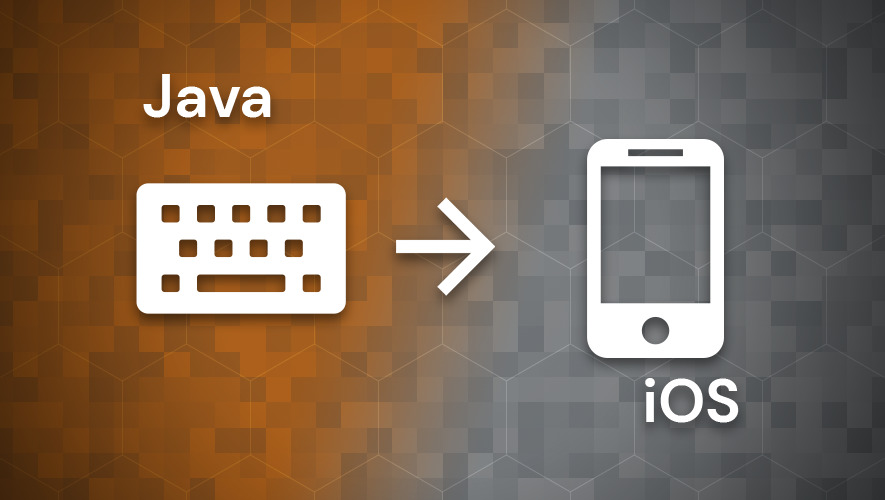
Table of Contents:
- Don't Ruin Your World - Use the UMT
- Step 1: Open the Input Java World
- Step 2: Select Bedrock as the Output Edition
- Step 3: Conversion Options
- Step 4: Convert
- Step 5: Save the Bedrock World
- Step 6: Compress the World
- Step 7: Upload Compressed World to iCloud
- Step 8: Import World from iCloud
Don't Ruin Your World - Use the UMT
Did you know that when Minecraft updates, only the parts of your world you visit will actually be updated? This can be a problem for converters.
For example, in the 1.18 Caves and Cliffs update the world height was expanded (0 to 255 became -64 to 320).
So, if your world was played on anything before 1.18 at any point and was also played on or after 1.18 at any point, then only those recently visited chunks have the new world height.
After conversion, all the pre-1.18 chunks will become empty under Y:0 where new terrain is supposed to be! Minecraft won't see anything wrong with that since it can't tell the difference between a converted chunk and one you might have just dug out by hand.
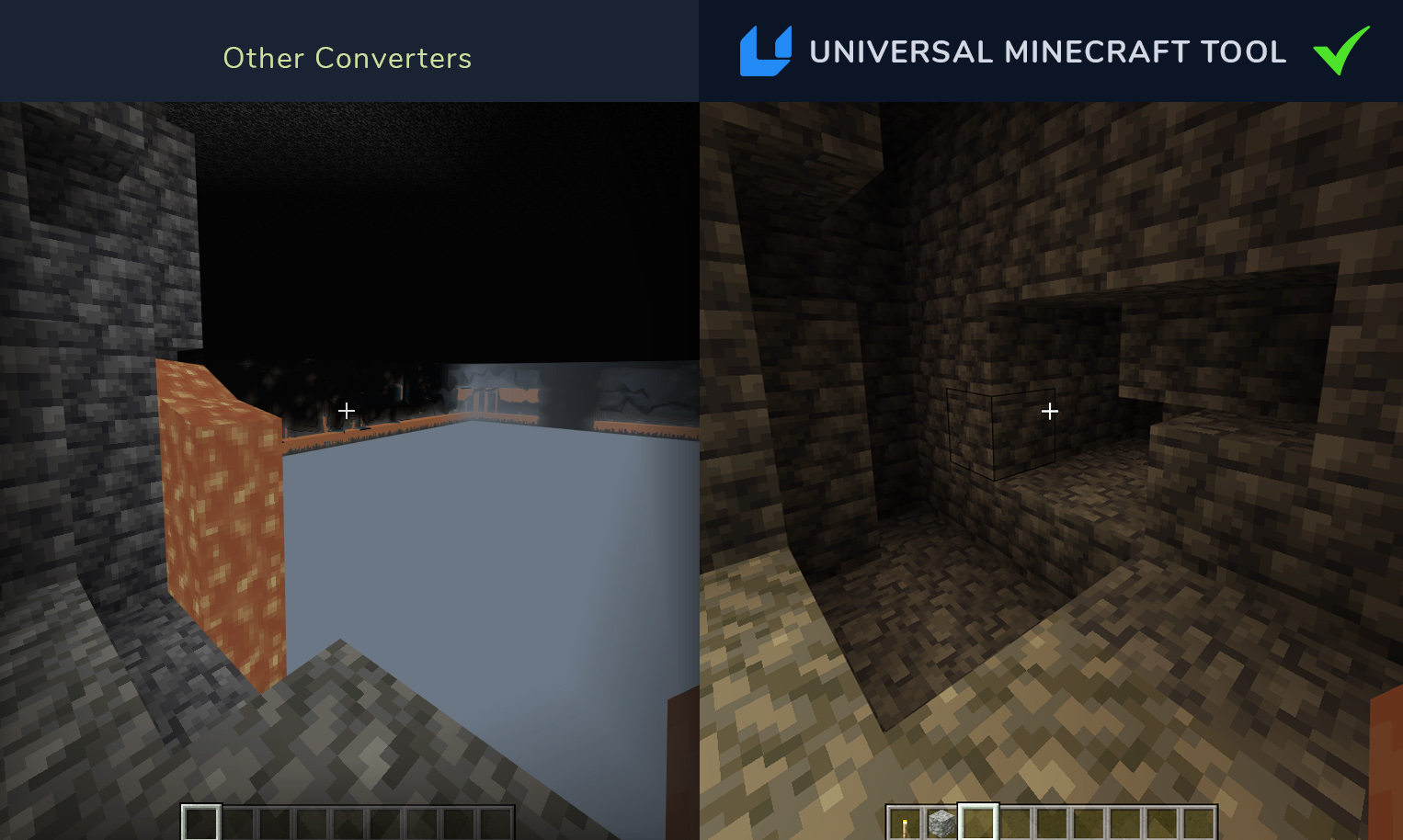
Only the Universal Minecraft Tool supports a feature called Allow Older Chunk Versions which detects scenarios like this and properly formats the output chunks to signal to Minecraft that the terrain needs to be updated.
For this reason alone, the Universal Minecraft Tool is the only proper tool for the job.
But there are other reasons too:
- Unlimited world size (others limit you to 500MB)
- Full item conversion (enchantments, written books, etc)
- All entities and tile entities are supported
- Proto chunk skipping (others leave gaping holes in your world)
- Terrain blending flags (others ignore this)
- Snapshot support
- 2D and 3D biome conversion
- Full product support with a guarantee
And so many more!
Step 1: Open the Input Java World
To begin, you'll need to tell to the UMT which world you're trying to convert.
Follow this guide to Open a Java World in the Universal Minecraft Tool
Step 2: Select Bedrock as the Output Edition
Click Bedrock to select it as the target output edition.
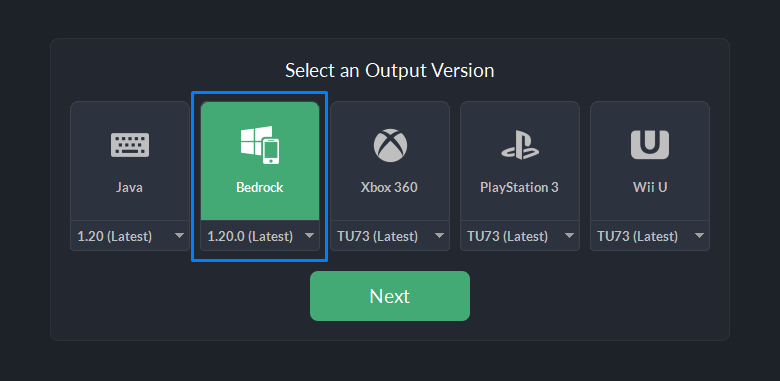
You'll notice a drop-down menu for selecting different target versions. This can be useful if you're trying to get more advanced with your world conversion, but for most cases you'll want to leave it on the latest version.
Click Next to continue.
Step 3: Conversion Options
This panel allows you to control certain technical aspects of how the conversion should run. Thankfully, for Java to Bedrock conversion you'll usually want to leave these at their default values.
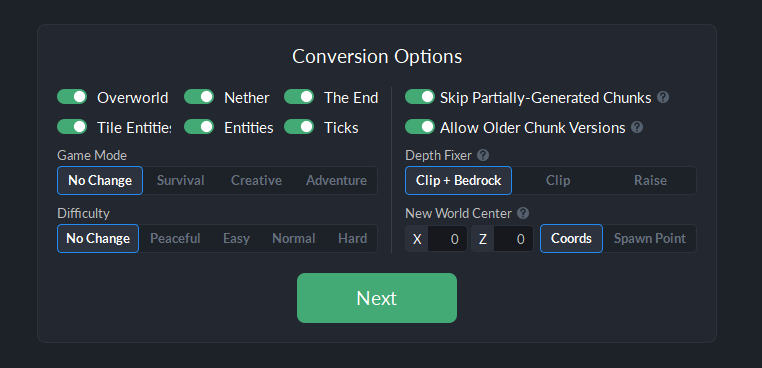
Two very important settings you'll likely want to keep enabled are the Skip Partially-Generated Chunks and Allow Older Chunk Versions features. Both are crucial to ensuring you don't have any holes or empty spots in your world (as we mentioned earlier).
One Important Exception
If you are converting a flatland world created on or after 1.18 to a version before 1.18, then you'll want to set the Depth Fixer conversion option to Raise.
This will raise your world up by 64 blocks ensuring the bottom of your world is repositioned from Y:-64 to Y:0.
Step 4: Convert
It's the big moment!
Click Start Conversion to begin.
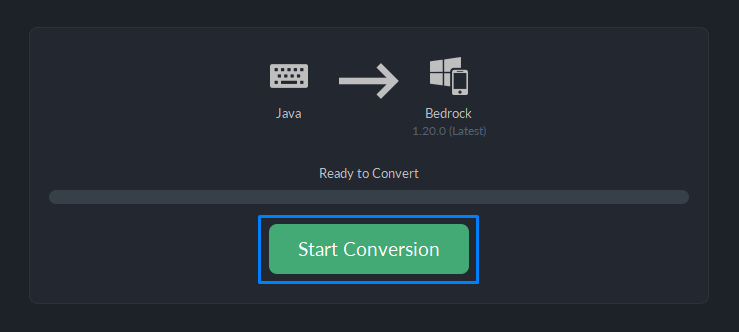
The UMT will now scan the input world and perform all the necessary conversion steps to create a super-accurate clone of your world for Bedrock edition.
Step 5: Save the Bedrock World
The next step is to pick a spot to save the output world.
Click Save World to bring up the save window.
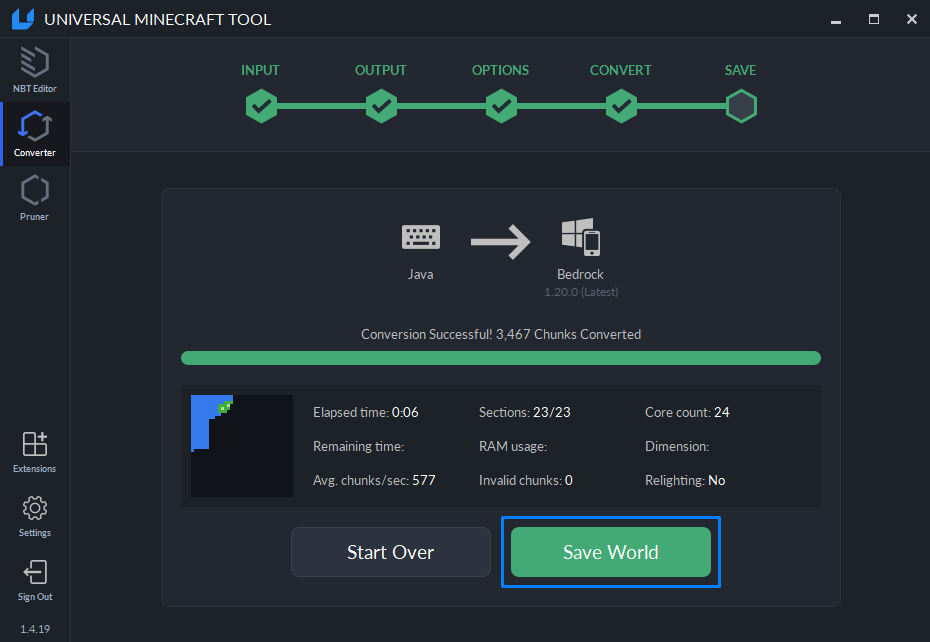
If you have Minecraft Windows 10 edition installed, the UMT will default to the install location of your Windows 10 edition worlds. However, we don't want to actually install it into Windows 10 edition.
You should instead save it somewhere you can easily find it, like your Desktop.
Enter a name for the world, and click Save.
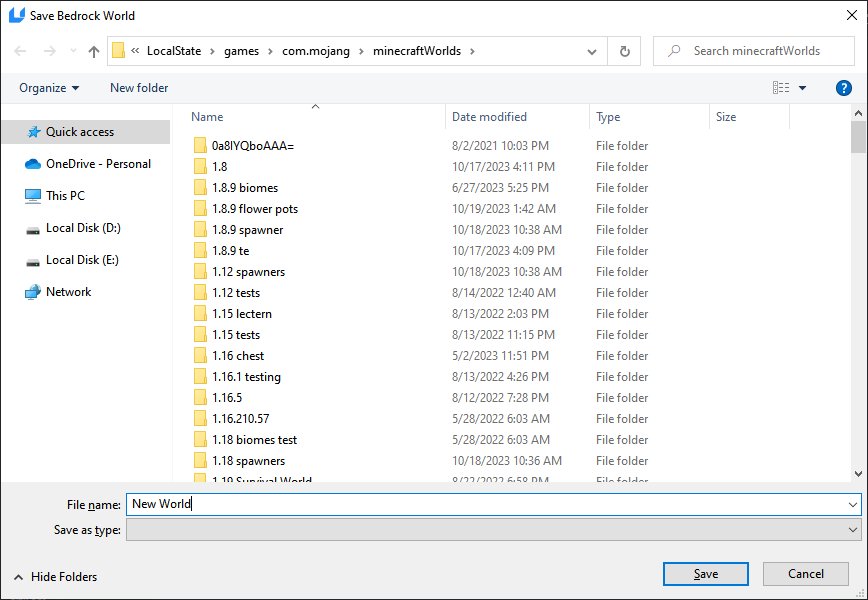
Step 6: Compress the World
Next after conversion is transferring the Bedrock world to our iOS device so it can actually be played.
Open File Explorer and go to where you saved the converted world.
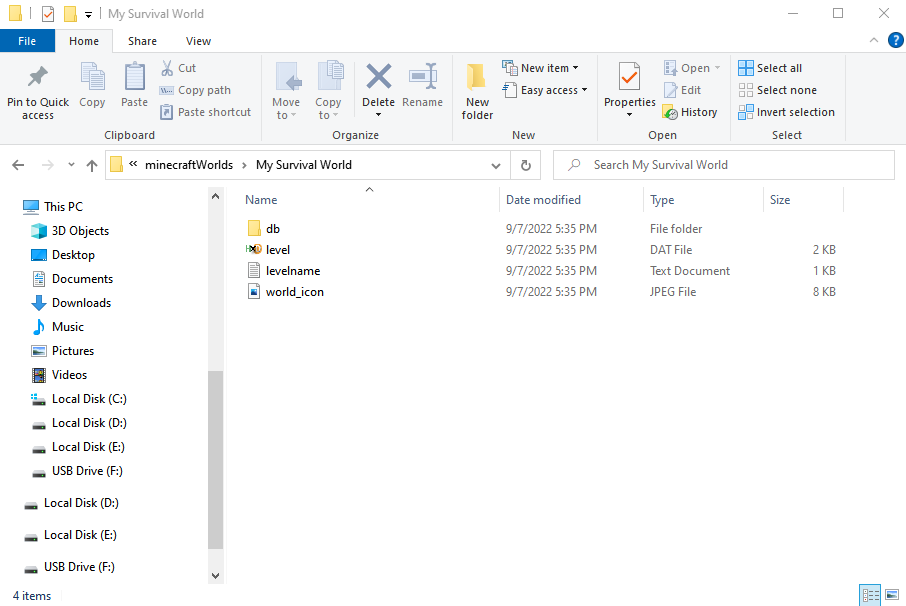
Select everything (Ctrl+A), right click, and choose Send to > Compressed (zipped) folder'.
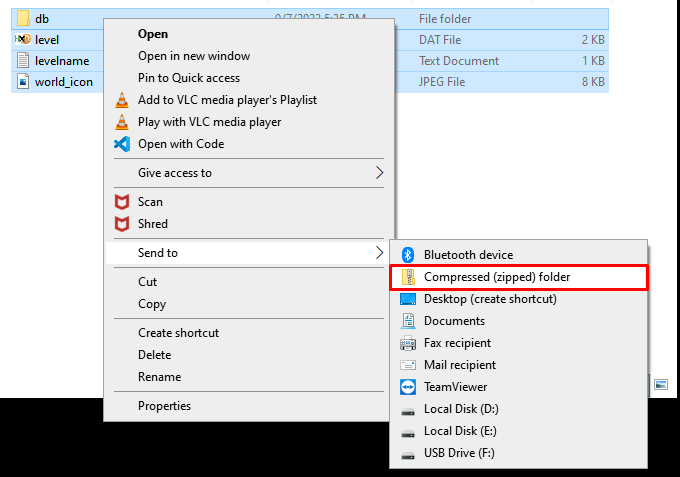
Rename the zip file to something memorable.

Step 7: Upload Compressed World to iCloud
iCloud is an easy way to transfer the converted world to your iOS device. If you have a different transferring method such as Realms, feel free to use that instead.
Sign in to iCloud Drive on a web browser, then click the Upload button.
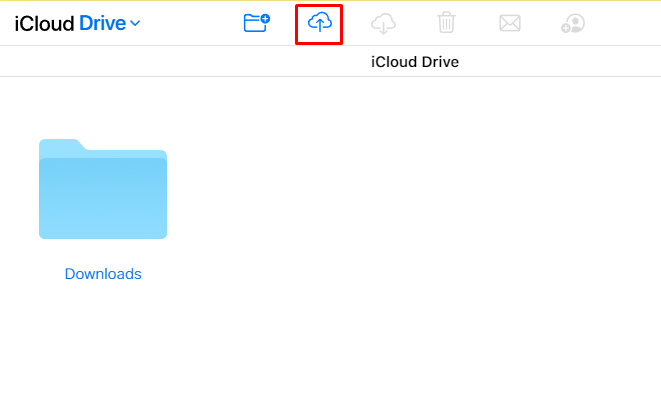
Select the zip file we created earlier.

Step 8: Import World from iCloud
Head on over to your iOS device and go to the Files app. Find the zipped world file we transferred in the previous step in iCloud Drive. Long press it and tap Move. Move the file to On My iPhone > Minecraft > games > com.mojang > minecraftWorlds.
Once it's finished, navigate to that same minecraftWorlds folder we just moved the zipped world file to. Long press it and tap Uncompress. You can now delete the zipped file.
Watch Video:
Congratulations! You've successfully converted and transferred the world to iOS.